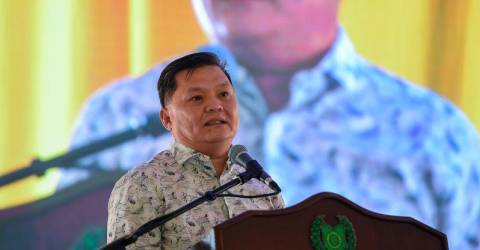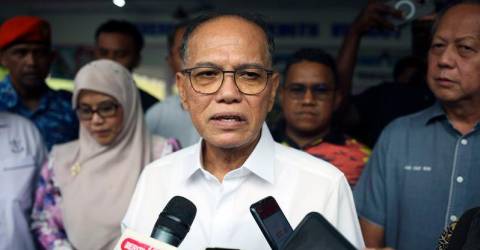ADVERTISE HERE
KUCHING: The projected water demand in Sarawak in 2030 will increase by 2,400 Million Litres Per Day (MLD) compared to the current demand of 2,060 JLH, said State Utilities and Telecommunications Minister Datuk Seri Julaihi Narawai.
He said this was based on the Sarawak Water Supply and Water Grid Master Plan.
Thus, to ensure adequate water margin reserves, he said, Sarawak needs at least 20 per cent of the capacity of existing water treatment plants.
“Currently, several major water treatment plants are operating at a low margin reserve rate such as the Batu Kitang Water Treatment Plant in Kuching which is at a rate of 12 per cent and the Salim Water Treatment Plant in Sibu which is only at a rate of one per cent.
“Therefore, several critical main projects are being and need to be implemented immediately to meet the expected increase in water demand,“ he said when winding up the debate for his ministry at the State Assembly sitting here today.
ALSO READ: Teo: Water tariff adjustment can help consolidate water supply system
Julaihi said for the upgrading project of the Batu Kitang Water Treatment Plant (Plant Two) here, which is scheduled to be completed in the third quarter of this year, the plant’s production capacity can increase to 868 MLD compared to the current 764 MLD capacity.
“As for the capacity upgrading project of the Batu Kitang Water Treatment Plant (Plant Four), it will help increase the plant’s production capacity to 968 MLD by 2026.
“The construction of the Phase One new water treatment plant in Landeh, Kuching, which is currently in the planning stage, is estimated to have a capacity of 200 MLD, while the upgrading project of the Salim Water Treatment Plant, Sibu, which is scheduled to be completed by the fourth quarter of 2026, will increase the capacity from 150 MLD to 300 MLD,“ he said.
ALSO READ: RM7.5m allocated for water supply to affected residents in 12 Sabah districts
In addition, Julaihi said the ministry is also implementing upgrading project to replace old and dilapidated pipes in the state, involving an allocation of RM1.085 billion, of which RM247 million has been allocated for this this year.
“A stretch of 2,742 kilometres (km) of old and dilapidated pipelines are still used in the water supply distribution system in Sarawak. This is the main cause of the high rate of non-revenue water, which is an average of 43 per cent,“ he said.

 1 year ago
135
1 year ago
135



 English (US) ·
English (US) ·